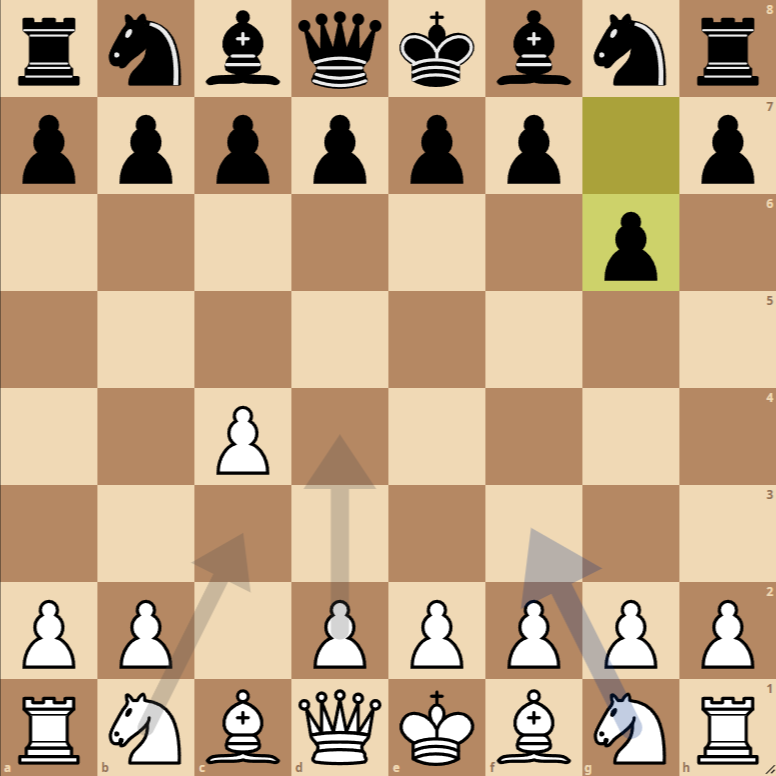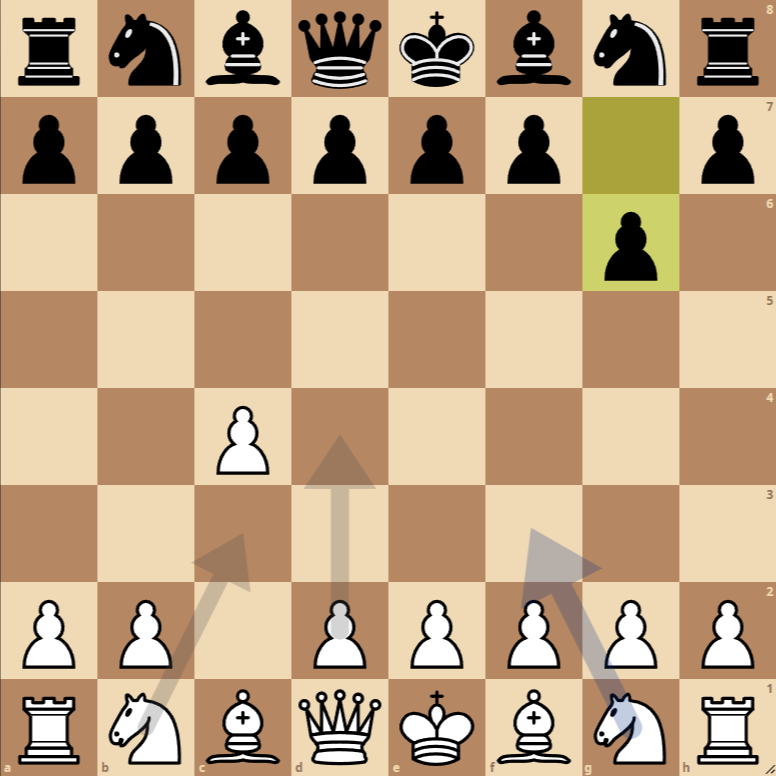How to Play the English Opening, Great Snake Variation

The English Opening, known for its flexibility and strategic richness, starts with the move of the pawn to c4. The Great Snake Variation is a less common line characterized by moves that seek asymmetrical play and less-explored positions.
- 1. c4: This first move by White controls the center from the flank, preparing the way for the development of minor pieces, particularly the king’s bishop and queen.
- 1… g6: Black responds by preparing for long castling and the development of the bishop on the long diagonal, pointing towards the center. This move also provides flexibility for pawn structures in the center and king’s flank.
Variations of the English Opening, Great Snake Variation
Variations in the English Opening, Great Snake Variation, mainly arise from Black’s responses after 1.c4. These variations can lead to dynamic games with different pawn structures and strategic plans.
1… e5
This variation aims to control the center directly, challenging White’s influence. It leads to a symmetrical structure if White chooses to advance d4.
1… c5
This response is an attempt at symmetry that can transpose into Sicilian lines. Black aims to counter White’s control in the center and prepare their own play on the queen’s flank.
1… Nf6
Developing the knight towards the center, this move prepares castling and offers possibilities for transpositions into other openings like the Queen’s Gambit or even the Nimzo-Indian Defense.

